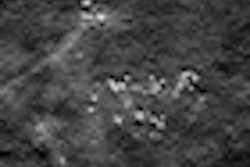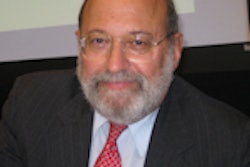Using digital breast tomosynthesis (DBT) with digital mammography increases radiologists' ability to detect cancer in both fatty and dense breast tissue, but the technology works particularly well with dense tissue, according to researchers from Massachusetts General Hospital (MGH) in Boston.
MGH researchers compared the performance of radiologists using full-field digital mammography (FFDM) with DBT to that of FFDM alone. They found that the combination of FFDM plus DBT helped radiologists find more cancers, according to a presentation at the 2009 RSNA conference in Chicago.
"Despite what the U.S. Preventive Services Task Force has said, annual mammograms for women aged 40 and over has been shown to reduce [mortality from] breast cancer," study lead author Dr. Elizabeth Rafferty told RSNA attendees. "But mammography doesn't find all breast cancers: Its sensitivity decreases as breast tissue density increases. Since density is emerging as an independent risk factor for the development of breast cancer, it merits extra consideration."
Rafferty and colleagues enlisted 15 radiologists to evaluate 310 cancerous, benign, recalled screening, and negative screening cases. Images were acquired with a commercially available FFDM system (Selenia, Hologic, Bedford, MA) and a prototype breast tomosynthesis system (also Hologic).
The interpreting radiologists read the images in three modes, including FFDM alone, FFDM plus mediolateral oblique (MLO) DBT, and FFDM plus MLO and craniocaudal (CC) DBT. For each case, each radiologist recorded a probability of malignancy score between zero and 100.
"Structural noise can negatively impact radiologists' mammography reading performance, because overlapping structures can obscure lesions -- or mimic abnormalities, which can generate false positives," Rafferty said.
Of the total cases, 61% were classified as fatty tissue and 39% as dense. They rated the sensitivity of the different units according to the receiver operator characteristics (ROC) area under the curve, as shown in the table below.
|
The researchers found significant gain in radiologist accuracy when the second view of DBT was added, according to Rafferty. FFDM with MLO/CC tomosynthesis was better by a statistically significant margin than FFDM alone for both fatty and dense breasts, while FFDM with just MLO tomosynthesis proved superior to FFDM by a statistically significant margin for dense breasts (p > 0.041) but not for fatty breasts (p > 0.077).
Finally, FFDM with MLO/CC tomosynthesis was better by a statistically significant margin than FFDM with just MLO tomosynthesis in dense breasts (p > 0.043) but not in fatty breasts (p > 0.104).
"Full-field digital plus tomosynthesis proved significantly better than digital mammography alone in ROC performance, for both fatty and dense tissue," she said.
By Kate Madden Yee
AuntMinnie.com staff writer
January 18, 2010
Related Reading
DBT reduces false-positive rate by 41% in screening setting, December 1, 2009
Digital breast tomosynthesis cuts recall rate by 30%, August 4, 2009
ECR delivers new findings on digital breast tomosynthesis, March 7, 2009
New breast imaging applications show diagnostic promise, January 20, 2009
Pilot study: DBT's role needs further research, April 18, 2008
Copyright © 2010 AuntMinnie.com



















